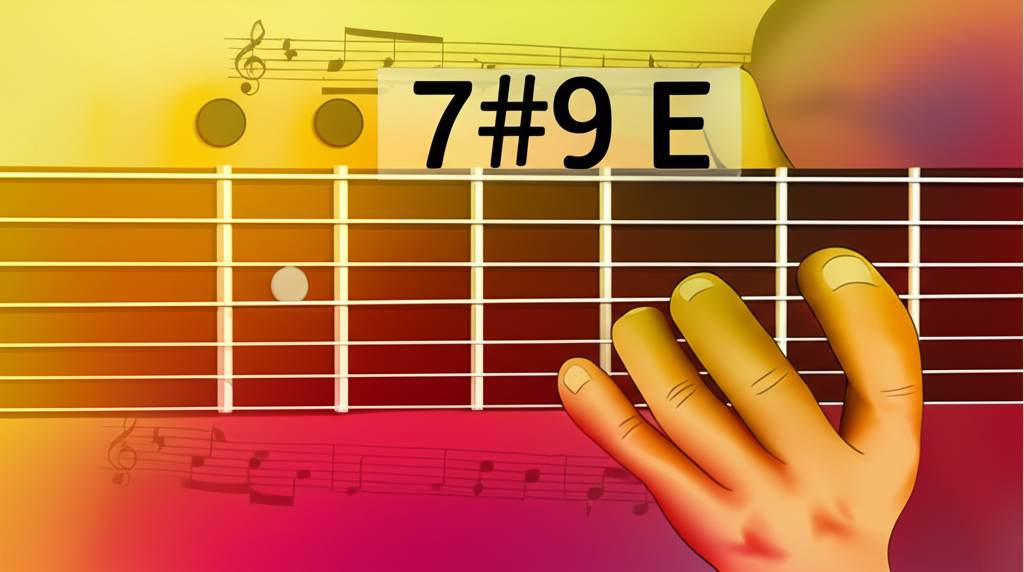What is the Hendrix Chord (7#9)?


The Hendrix Chord, formally known as the dominant seventh sharp nine (7#9), is a rich and dissonant chord that has become synonymous with the sound of Jimi Hendrix. It is a dominant seventh chord with an added sharp ninth interval, creating a unique blend of tension and color. The chord formula is: 1 - 3 - 5 - b7 - #9.
Historical Context and Musical Significance
While the 7#9 chord was used in jazz and blues before Jimi Hendrix, he popularized it in rock music, notably in songs like "Purple Haze" and "Foxy Lady." The chord's dissonance and tension make it perfect for creating a psychedelic and edgy sound, which became a hallmark of Hendrix's style.
Technical Construction
The 7#9 chord is built by stacking the following intervals:
- Root (1): The foundational note of the chord.
- Major Third (3): Adds the major quality.
- Perfect Fifth (5): Stabilizes the chord.
- Minor Seventh (b7): Creates the dominant seventh sound.
- Sharp Ninth (#9): Introduces dissonance and tension.
For example, an E7#9 chord includes the notes: E (root), G# (major third), B (fifth), D (minor seventh), and F## (sharp ninth, enharmonically equivalent to G).
Practical Applications and Examples
The 7#9 chord is versatile and appears in various genres:
- Rock: Jimi Hendrix's "Purple Haze" (E7#9).
- Jazz: Used as a substitute for dominant chords to add tension.
- Blues: Adds a gritty, expressive quality to blues progressions.
- Funk: Provides a funky, dissonant edge in rhythm guitar parts.
Progressive Exercises
Here are some exercises to master the 7#9 chord:
- Basic Voicing: Play E7#9 on guitar (0-7-6-7-8-0).
- Chord Progressions: Practice E7#9 - A7 - B7 in a blues context.
- Improvisation: Solo over an E7#9 chord using the E Mixolydian and E altered scales.
Common Usage in Different Genres
The 7#9 chord is a staple in:
- Classical: Rare, but used for dramatic effect.
- Jazz: As a tension-filled dominant chord.
- Rock: For its edgy, psychedelic sound.
- Pop: Occasionally for a bold, unexpected harmonic twist.
Conclusion
The Hendrix Chord (7#9) is a powerful tool for adding tension and color to your music. Whether you're playing rock, jazz, or blues, mastering this chord will expand your harmonic palette and give your playing a distinctive edge.
